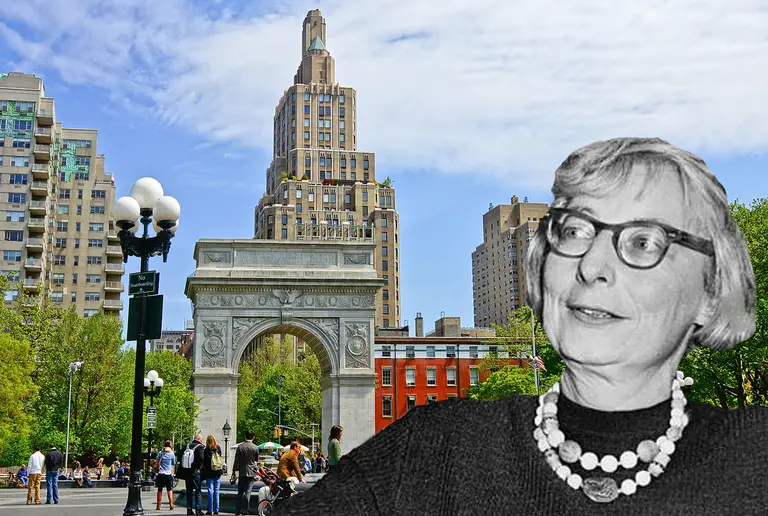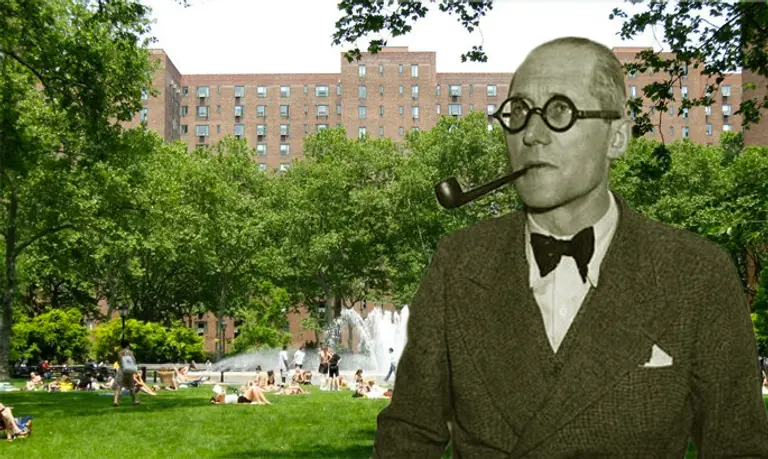Greenwich Village home of urbanist Jane Jacobs gets historic plaque
Learn more here

This year marks the 50th anniversary of the designation of the Greenwich Village Historic District. One of the city’s oldest and largest landmark districts, it’s a treasure trove of rich history, pioneering culture, and charming architecture. Village Preservation will be spending 2019 marking this anniversary with events, lectures, and new interactive online resources, including a celebration and district-wide weekend-long “Open House” starting on Saturday, April 13 in Washington Square. Check here for updates and more details. This is part of a series of posts about the Greenwich Village Historic District marking its golden anniversary.

Washington Square Park via Wiki Commons; Jane Jacobs via Wiki Commons
Just in time for LGBT Pride Month, the Landmarks Preservation Commission is looking to designate the Stonewall Inn as a city landmark. [NYT] Looking back at the Theater District’s 1982 Broadway Massacre. [Ephemeral NY] A forthcoming, untitled opera will depict the feud between Robert Moses and Jane Jacobs. [NYO] This map uses NYPD data to show […]

Stuyvesant Town Oval via Marianne O’Leary via photopin cc